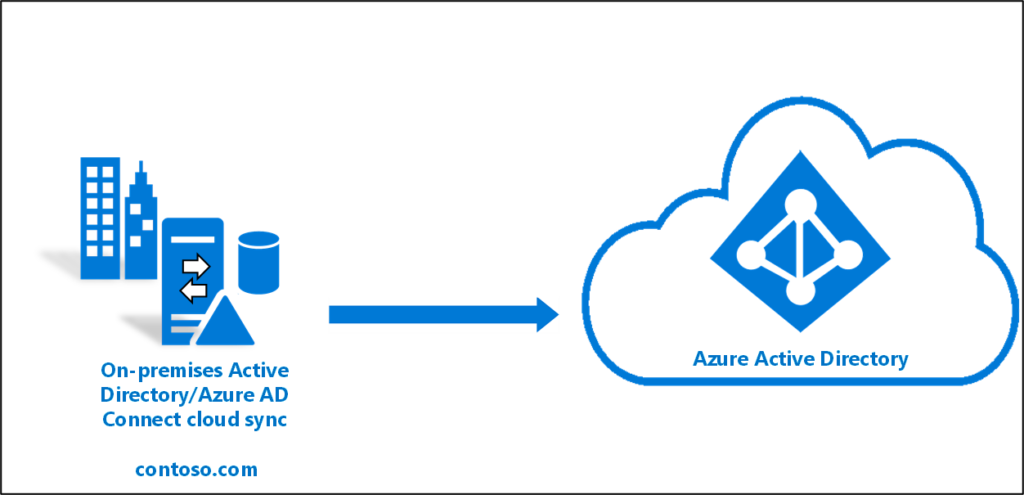Since the discovery of the cloud, Microsoft Azure has continued to shine in the world of cloud computing with an ever-expanding customer base of up to 715 million users on the Azure active directory and a significant percentage of fortune 500 companies consuming its services. Microsoft offers more than 600 cloud services enterprises including application development services, data storage and management services, compute, analytics, networks, and more. Azure also supports a range of databases, operating systems, and developer tools and frameworks. Azure Active Directory offers immense security benefits with identity management at its core. Along with these numerous options, regional pairs play a crucial role in Azure’s infrastructure strategy. Azure regional pairs are built to maximize availability and offer capabilities for disaster recovery. This system combines two geographically distinct regions (such as the United States, Europe, or Asia) to guarantee data residency and compliance and provide geographic redundancy for applications. Microsoft’s dedication to offering dependable and secure services to its customers is demonstrated by the Azure regional pairs strategy. Its design demonstrates the fact that data protection and disaster recovery are equally crucial to the cloud computing environment as functionality and features. What is Azure Active Directory?
A complete Guide to Azure Active Directory

Azure Active Directory (Azure AD) is Microsoft’s comprehensive suite for identity access management solutions for enterprises using Azure services. Azure AD was launched around the same time the Windows 2000 server was released and forms the cornerstone of Office 365 while also providing access for external SaaS applications. It is designed to support both on-premise and cloud directories. While the on-premise AD is found in an organization’s on-premise servers known as Domain Controllers (DC), Azure AD syncs with cloud directories using cloud-based authentication protocols such as SAML and OAUTH2.
The cloud-based service provides a number of features to deliver maximum protection from cyberattacks to systems and users of an organization’s IT infrastructure.
- Single sign-on authentication (SSO)
- Multi-factor authentication (MFA)
- Mobile device management (MDM) with Microsoft Intune
- Entitlement Management i.e group access rights to applications and resources
- Privileged identity management
- Conditional access
The main aim of Azure AD service is to provide a central management point for identity access, as well as security compliance and governance of the entire organization’s IT ecosystem.
Key features of the Azure Active Directory
Ideally, Azure AD is one directory that stores all the user names, credentials, and access rights, and any other access-related information of an organization. This gives the organization a central point from which user identity, security, and compliance of its IT architecture are managed and controlled.
Azure AD boasts the following features:
- Application management
Being powered by the cloud, businesses can opt to operate Azure AD in cloud-only mode or hybrid mode by integrating it with on-premise applications. Thus Azure AD can be used to manage cloud apps, on-premise apps, single sign-on, and other SaaS apps.
- Mobile device and mobile application management
Azure AD through the Intune feature is also used for mobile device and mobile application management essentially ensuring that users accessing systems and resources through their devices comply with the security measures in place.
- Business-to-business (B2B)
Often external users like suppliers, partners, customers, and others need to access business applications for one reason or the other. Azure AD features the B2B feature facilitates the management of external identities’ access to business applications.
- Business-to-customer (B2C)
This feature is an exclusive authentication solution for the end customer. It is important to note that B2C is independent of Azure AD. This feature enables businesses to develop customer-facing applications that users can register and manage their accounts with not many authentication restrictions. However, the authentication process works the same way as Azure AD.
- Authentication
Azure AD authentication function encompasses the protocols that validate users’, computers’. And services’ access to the AD securely. They include MFA (Multi-Factor Authentication), self-service password reset, Smart Lockout, and passwordless authentication such as FIDO2 security keys, Microsoft Authenticator app, and Windows Hello that provide more secure sign-in for users.
- Built-in governance controls
Azure AD features in-built governance control features that enable system administrators to automate and schedule the identity and access lifecycle management and privileged access processes. This accords them full control and easy monitoring of user access to the business applications and resources.
- Monitoring and reporting
Azure AD comes with monitoring and reporting features that enable admins to monitor the entire IT environment and draw insightful security and activity reports. The authentication methods activities board, for instance, helps admins to monitor users’ authentication methods during registration and usage of resources, while the user registration details feature allows them to filter users based on specific parameters.
What can you do with Azure AD?
Azure AD is fundamentally a database that contains the user names, access rights, and credentials of the users of business systems and resources. It uses REST APIs to securely transmit data between cloud applications and business systems. Azure AD is fundamentally a database containing business user names, access rights, and credentials that authorize users to access business applications.
In general, Azure AD is designed to give IT sysadmins control over access to business applications and resources while also providing users with a personalized app experience during signing in to the business applications.
- Azure AD comes with the capabilities of automating the provisioning of cloud and on-premise applications on the Azure Active Directory to enable single sign-on (SSO).
- Users can access cloud-based business applications from any location across the globe.
- Single sign-on (SSO) capabilities where users can access multiple business applications that they are authorized to access by signing in only once with one set of login credentials.
- Azure AD enables IT admins to create role-assigned groups each with a maximum of 100 authorized users and resource groups for assigning group-level permissions to users to allow for easy access management and create an additional layer of security for business data.
- Whether they are working in the business location or remotely, Azure AD provides employees and other users convenient access to business applications and resources. This streamlines workflows and enhances productivity in the business.
- Azure AD enables automated provisioning of new users to role-based and resource groups.
- With Azure AD, system admins can provision business applications to automatically block legacy protocols with security threat concerns and configure how end users consent to applications that could be phishing attacks.
What are the key benefits of Azure AD for businesses?
Azure AD comes with immense benefits for any business in addition to its flexibility and ability to integrate with most SaaS applications including Salesforce and Office 365. Further on, Azure AD offers the following benefits.
- Single point of user identity and access management. Azure AD provides organizations with a single platform from where they manage user identity and access.
- Single identity for all applications. Azure AD single sign-on (SSO) capabilities enable users to sign into their Microsoft applications and other SaaS applications using one set of login details. The SSO feature also makes access to applications and resources easy and convenient for users.
- Multi-platform support. Azure AD works with multiple platforms, devices, and operating systems to enhance collaboration, communication, and productivity. This is also convenient for businesses as it allows them to select the solutions that they need from a range of Azure AD services.
- High-level security. Azure AD allows enterprises to take advantage of machine learning and heuristic algorithms powered architecture to safeguard their data, applications, and resources from compromised access. Other security functions like privileged identity management, conditional access, and multi-factor authentication enhance security.
- Collaboration. With the ability to add external users like business partners, suppliers, and even customers to the Azure AD, collaboration becomes easier which streamlines business operations while at the same time enhancing security.
Azure AD licensing models
While organizations that use Office 365 applications automatically have free access to Azure AD standard features, Azure AD has several other packages that it offers its clients. Azure AD has four licensing levels including:
- Azure AD Free
The Azure AD free package comes with the following features:
- User and group management enabled with add, update, and delete capabilities
- Up to 500,000 directory objects
- On-premise directory integration
- Cloud authentication, federated authentication, and device registration capabilities
- Self-service password reset for cloud users
- Up to 10 SSO applications both Office 365 and other SaaS applications
- Multi-Factor authentication
- Basic security and user activity reporting
- Azure Active Directory Premium P1
In addition to the basic features offered in the Azure AD free package, Premium P1 is enabled with all IAM, SSO, and reporting capabilities. Additional features in this package include:
- Self-service password reset and group management for on-prem users
- Different group management including dynamic groups
- Microsoft Identity Manager access for on-premise, hybrid, and cloud application users
- Azure Active Directory Premium P2
Azure Active Directory Premium P2 offers advanced security and data protection features like
- Identity protection for advanced conditional access management
- Privileged Identity Management for admin access management
Conclusion
Azure AD is a useful tool for both businesses and their stakeholders as it offers easy access and identity management for businesses and convenient access to the users of their applications from different locations and devices. Based on a report by Microsoft Every Day, Azure AD hosts and manages more than 1.2 billion identities which goes on to show just how popular it is to individuals and organizations. Essentially, as long as you are an Office 365 user, you have access to Azure AD.







Leave a Comment
You must be logged in to post a comment.